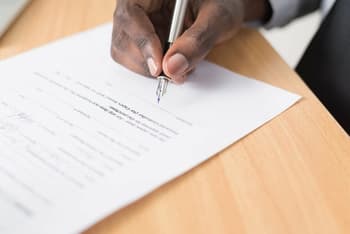If you are starting up a fashion label or already have a fashion label, you probably have decided on a name or started creating a logo for your brand. Registering your name and logo as a trade mark is crucial in protecting your business’ identity. Whether you are well-known in the fashion industry or just starting, your brand name and logo are valuable marketing tools. This article will explain the legal considerations when applying for a trade mark for your fashion label.
What is a Trade Mark?
A trade mark is a sign used to distinguish products and services. They must be:
- unique;
- distinctive; and
- comply with a range of legal requirements.
Although commonly thought of as just logos, trade marks can encompass a whole range of different things, including:
- words;
- phrases;
- single letters;
- numbers;
- smells;
- shapes;
- pictures;
- movements; or
- an aspect of packaging.

This guide explains the essentials of trade marks and the steps required to register a trade mark.
Why Should You Register a Trade Mark?
In the fashion industry, trade marks are crucial to marketing strategy. They allow consumers to associate your brand with quality, aesthetics, or style. These have significant implications for your business’ reputation and success.
While securing trade mark registration for aspects of your brand is not legally required, it is a beneficial risk minimisation strategy. A trade mark provides protection if competitors offer similar products or services under similar brands. While laws can apply to protect you, enforcing your rights can be expensive and time-consuming. Therefore, having something publicly listed as your intellectual property (IP) is a good idea.
Continue reading this article below the formLegal Requirements
1. Your Brand Name Must Not Be Descriptive
Other traders will legitimately need to be able to use certain words or phrases to describe their own businesses.
2. Your Brand Name and Logo Must Not Be Similar to Another Trade Mark
Trade marks give the owner exclusive rights to use a name or logo within their class of goods or services. This means you are prevented from registering a trade mark that is very similar to one already existing.
It is okay to use the same name as a trade mark in a completely different category so long as there is no confusion.
You may encounter issues if you apply for a name similar to another registered mark in a similar class.
The most successful applications use made-up brand names or tailored designs for their logos. You should consider employing a graphic designer or artist to design your logo.
Before applying for a trade mark, you should do a thorough search for similar brand names and logos on:
- Google;
- the ABN lookup; and
- the trade marks register.
If something similar comes up in your search, your application may be rejected, but you can still proceed with the name.
3. You Must Select the Right Classification for Your Fashion Brand
“Class” and “classification” are the terms IP Australia uses to distinguish categories of goods and services.
Before preparing your application, you will need to know which classes your fashion business falls under. You should ask yourself:
- what am I selling; and
- what am I likely to sell in the future?
You should apply for all relevant classes and pick everything you will sell from the items in those classes. These are some classes that are likely to apply to you:
| Class 18 | Bags |
| Class 25 | Clothing, shoes and hats |
| Class 26 | Clothing accessories |
| Class 35 | Retailing others’ clothing (e.g. ASOS) |
| Class 42 | Clothing design |
Key Takeaways
Before applying for trade marks for your fashion label, you should think about:
- whether your brand name and logo are distinctive;
- whether your brand name is descriptive;
- which classes your goods and services fall within; and
- whether your name and logo are unique in the classes that you are applying for.
If you have any questions or need assistance with considering your IP for your fashion brand, our trade mark lawyers can assist as part of our LegalVision membership. For a low monthly fee, you will have unlimited access to lawyers to answer your questions and draft and review your documents. Call us today on 1300 544 755 or visit our membership page.
Frequently Asked Questions
The process of registering a trade mark typically takes several months. After submitting your application to IP Australia, the initial examination usually takes about 3-4 months. If no issues or objections arise during the examination, your trade mark will be accepted for registration. However, if there are complications, such as similar existing trade marks or incomplete information, this can delay the process further. In total, a trade mark can take anywhere from 7 months to over a year to be fully registered.
Yes, you can use your trade mark while your application is pending, but keep in mind that complete legal protection only applies once it is officially registered. Using the trade mark early can help establish brand recognition. However, there is a risk if someone else has already registered a similar trade mark. If another party raises a conflict during the registration process, you may have to adjust or rebrand. Conducting thorough searches and possibly consulting a legal professional before starting use is important.
We appreciate your feedback – your submission has been successfully received.











